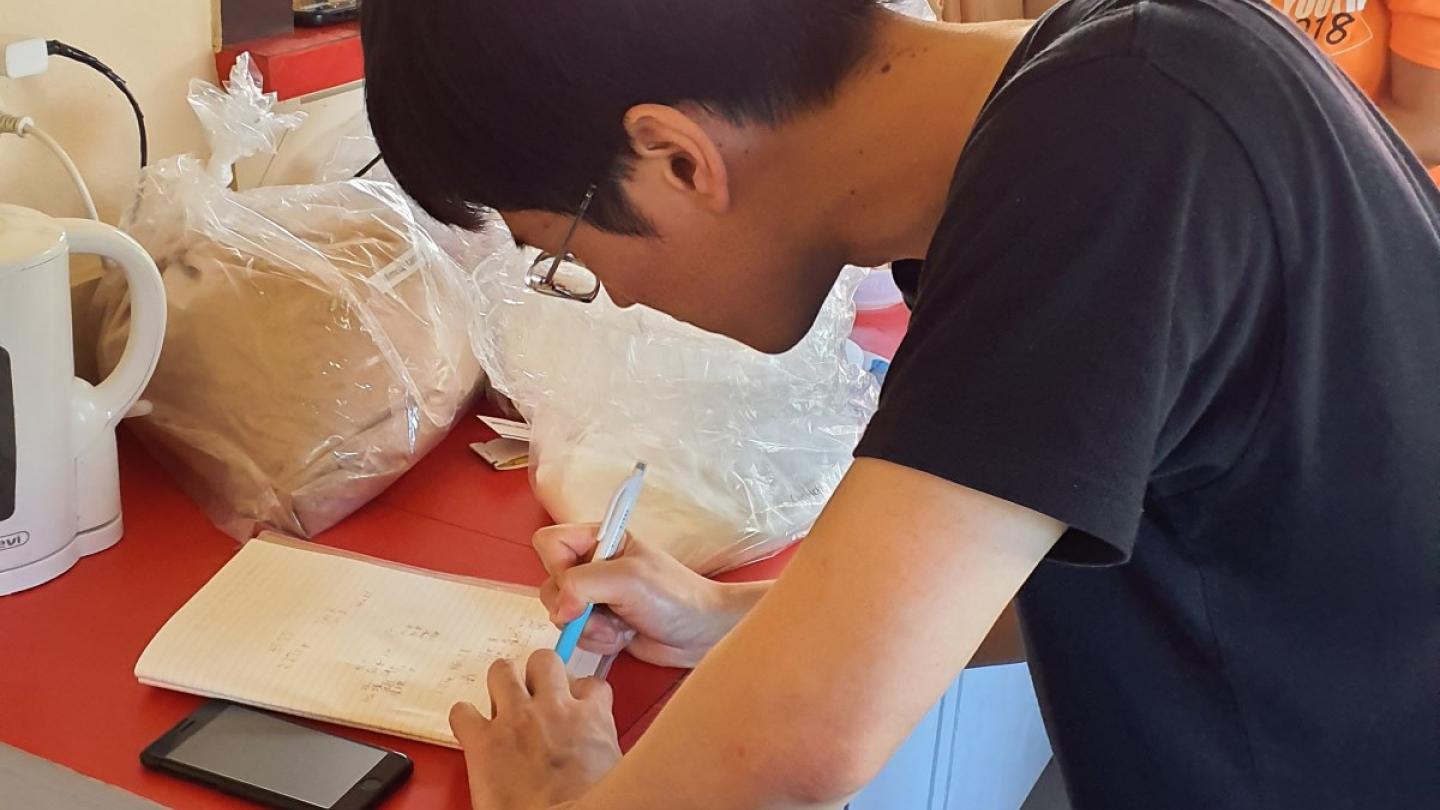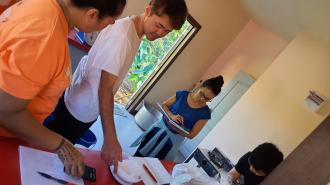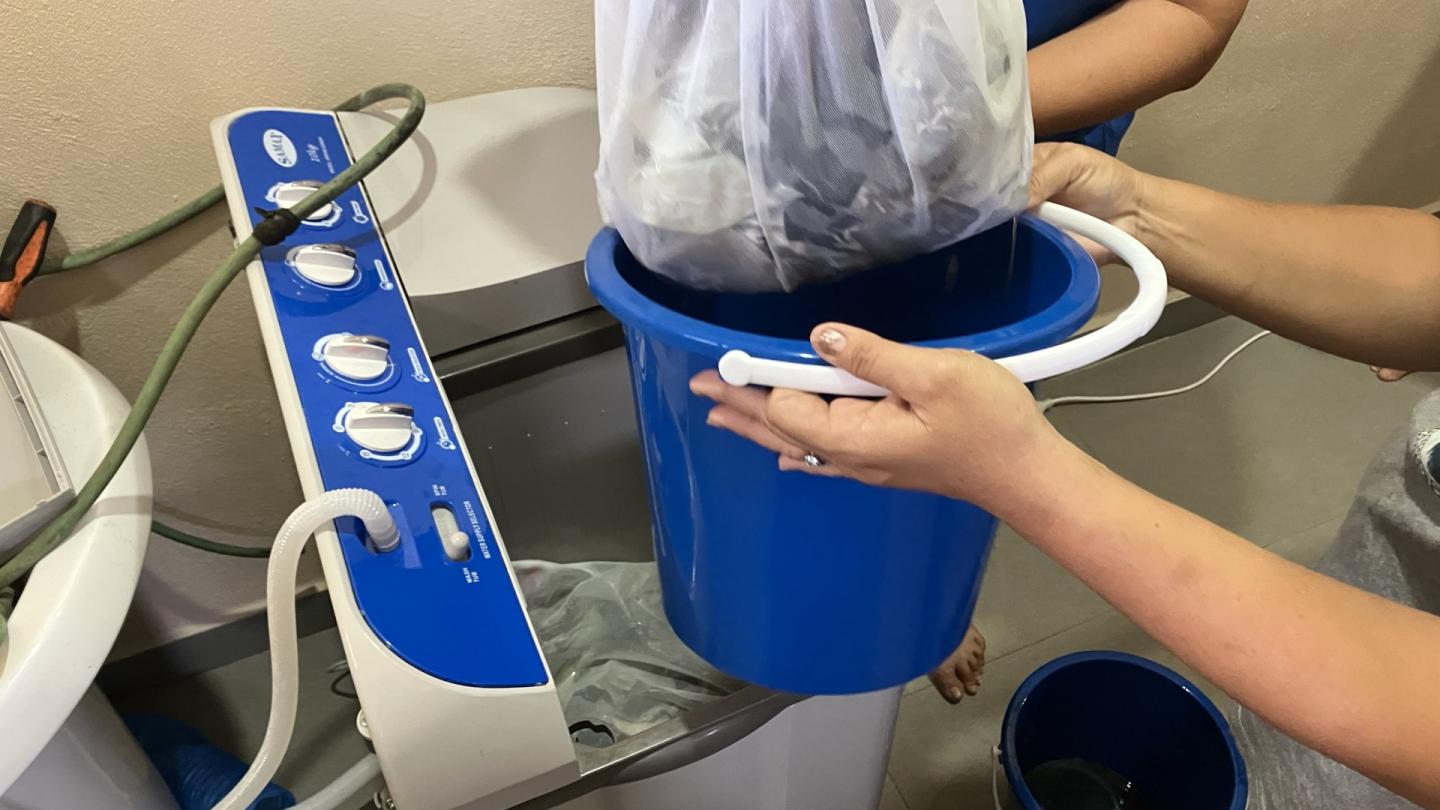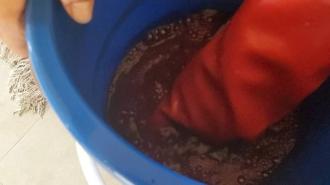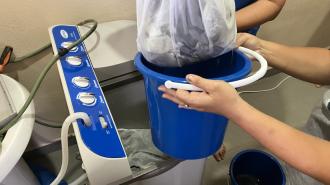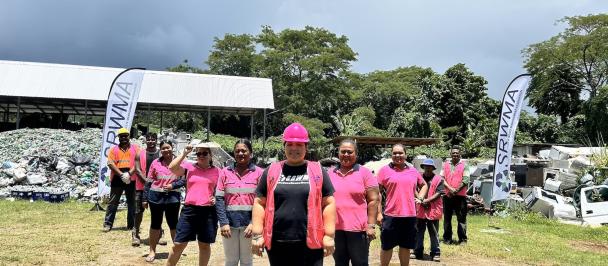
INTRODUCTION
Samoans, as are any Pacific islanders, are intimately connected to the vast blue expanse that surrounds our island home. Every creature from the sea is a delicacy to us, and we leave nothing to waste. Fish, being the star of our culinary show, is consumed entirely – the head, the eyeballs and even the skin finds its way onto our plates or into animal feed bowls.
The Japan Innovation Challenge is an initiative by the Cabinet Office of Japan, in partnership with the UNDP Japan office and UNDP Accelerator Labs, to promote innovative solutions to local development challenges. So, what prompted the Samoa Accelerator Lab to experiment with utilizing all parts of the fish given its food culture? Changing times and rapid developments at the global level means that national priorities have also undergone fast-paced developments in order for societies and its Governments to adapt to the impacts of such rapid developments.
For the Pacific, the most pressing challenges it faces is climate change and the lack of resources to support its own national sustainable and resiliency agendas. It’s one major resource i.e. the ocean that is shared with 14 other Pacific Island countries though, is an untapped resource. The Blue economy is a recent development and as such, UNDP is positioning to support the countries it serves to design and develop a framework to guide and govern development activities.
Samoa’s food culture has also changed over the times. Gone are the days where every part of the fish was eaten or utilized. In recognition of this, the 100% Fish Use Project came to be, an exciting new venture: fish leather, crafted from the very skin that would otherwise go to waste. The Samoa Accelerator Lab in partnership with Think Sea Corp or Tototo through the Japan Innovation Challenge embarked on an experimentation journey to unlock the secrets of transforming fish skin into supple, sustainable leather.

THE 3 Ps - PLAN, PREPARE, PROCURE
To prepare for the initial learning process, AccLab and Tototo had planned months in advance the workflow process to ensure smooth operations. This included negotiations on the setup costs of the premises where the learning and experiments would take place, cost sharing of agents, products and equipment needed for the leather tanning process and the R&S of community leads to be trained on the process among others. As a result of the planning process, the deliverables agreed upon between AccLab and Tototo encompassed the following:
Hands-on training on the leather tanning process for fish skin
Manufacturing Report
Training modules
Prior to Tototo setting foot on our shores, a shopping list of required materials, equipment and agents was shared to enable the sourcing of needed materials. It quickly became clear that most of what was needed would be challenging to source. Samoa had already been undergoing shortages of food, fuel and groceries and the opening of its border saw an influx in tourists, and for the first time, much of what was usually readily available was difficult to supply.
For three weeks in the month of June, AccLab scoured local supermarkets for provisions, looking for alternatives to use. On top of the supply issue, we also had no idea whether the alternatives procured would be suitable for the leather processing experiment.

In between the supermarket runs, the AccLab team, which now consisted of two young women from the Samoa National Youth Council Inc. were also getting trained with two different methods of leather tanning between Tomohisa's two-day tanning technique and Hiromi's six-day process.
Guided by the skilled navigators from Think Sea Corp (Tototo), Captain Tomohisa and Co-Captain Hiromi, we charted the treacherous waters of de-fleshing, degreasing, bleaching, neutralization, and tanning. Each stage required its own specialized tools and resources, from degreasing agents to the all-important fish skin waste itself. In just three weeks of rapid learning and agile experimentation, we dedicated ourselves fully to mastering this intricate process, absorbing every bit of knowledge available before our Tototo mentors left.
The two-day tanning process showcased Tomohisa's expertise in a remarkable way. He had an extraordinary knack for identifying the perfect texture, aroma, and visual indicators that signaled the transformation of the skin into high-quality leather. This method however requires years of experience in handling fish skins and learning the minute changes that affect the fish skin. While it is the quickest way to increase the supply of fish skin leather, the risk of using this method means there is a higher chance if done incorrectly of the fish skin being damaged irreparably.
On the other hand, the six-day method required more patience but provided a safer approach for the more novice leather crafters. Keeping the long-term success in mind, the Tototo crew shared the secrets of this extended tanning technique with us. The longer but safer approach carried with it the challenge of being time consuming and labourious.
Equipped with this knowledge, we enthusiastically embarked on a daring Fish Leather Experiment during the final week of training from June 26 to 30, 2023. Transitioning from observation mode to hands-on learning, fully immersing ourselves in the process.
- Defrosting - 1 day
- Defleshing - 1 day
- Washing: Minimum 5 days - maximum 10 days
- Degreasing & bleaching: Minimum 5 days - maximum 10 days
- Neutralization - 3 days
- Tanning: Minimum 9 days - maximum 11 days
- Drying - 1 to 2 days
- Dyeing - 1 day
- Drying (after dyeing) - 1 to 2 days

THE PROCESS
The journey of transforming fish waste into sustainable leather began with the acquisition of 91kg of frozen fish skin waste from Apia Export Fish Packers Limited. After an overnight defrosting process, the team embarked on the labour-intensive task of defleshing, meticulously scraping off any remaining fish meat and trimming away thick, scaly bits. This process resulted in the extraction of 15.5kg of prime fish skin suitable for leather production, while the remaining 75.5kg was repurposed as animal feed.
For the second experimental round, the team sourced 82kg of fish skin from local market vendors. Despite originating from a different source, this batch yielded a solid 41kg of usable fish skin after defleshing, indicating the variability in waste composition. Notably, the market vendor waste exhibited less residue compared to fish and chips takeaway waste, underscoring the importance of waste characterization in sustainability efforts.
The washing stage proved to be a critical step in removing scales from the fish skin. Initial attempts with various laundry detergents proved ineffective due to their harsh alkalinity. Ultimately, dishwashing liquids such as Joy, Palmolive, and Lix, supplemented with sodium percarbonate or powder bleach, emerged as the winning wash formula. However, the process was not without challenges, as the washing machine frequently became clogged with scales, necessitating the use of laundry nets to contain the debris.
Temperature control was paramount during the degreasing and bleaching stages to prevent damage to the fish skin. The team employed chest freezers to maintain temperatures below 15°C, ensuring the skins remained in optimal condition throughout the process. This meticulous temperature management persisted for 5-10 days until the skins achieved the desired texture, aroma, and colour.
Neutralization of alkalinity was achieved through a three-day salt bath, with regular solution changes to prepare the skins for tanning. The subsequent tanning process, lasting nine consecutive days (or 11 days excluding weekends), marked the alchemical metamorphosis of fish skin into supple leather. The tanning formula, calculated based on the weight of the fish skin, utilized salt as a water-based measurement, resulting in the successful transformation of the material.
Despite setbacks in formula experimentation, such as the unsuccessful substitution of fat liquor with coconut oil, the team remained committed to refining their process. The drying phase involved a gentle indoor air-drying session over two days, allowing the leather to reach its final form before dyeing.
Dyeing, a crucial step in enhancing the aesthetic appeal of the leather, involved submerging the material in a dye solution comprising fish leather, hot water, dye, and citric acid. The team experimented with various dyeing techniques, including vegetable dyes and pandanus concoctions, achieving vibrant and luscious color absorption.
Finally, crafting sessions led by mentors expanded the team's skill set, enabling the creation of accessories and other items from the tanned and dyed fish leather. This holistic approach to waste utilization exemplifies the team's commitment to sustainability and innovation in the pursuit of creating luxurious, ocean-honouring materials.

 Locations
Locations

